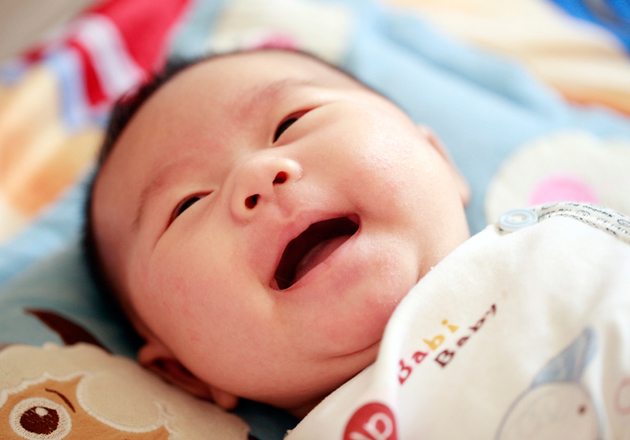Jan. 22 (NBD) -- The number of second children born in 2017 rose further to 8.83 million, an increase of 1.62 million over the previous year.
Second-borns accounted for 51.2 percent of the total births in the year, representing a rise of 11 percentage and marking the first time that second children make up more than half of newborns and outnumber newborn first children since China's implementation of the second-child policy.
The figures were released at a conference hosted by the National Bureau of Statistics of China (NBSC) on Saturday.
Newborn population for 2017 show slight decrease
There were 17.23 million newborn babies in China last year, with the birth rate being 12.43 permillage. Both metrics show slight decrease as compared to 2016, when 17.86 million babies were born and the birth rate came in at 12.95 permillage.
Because of the slight dip, some experts are doubting the effect of the second-child policy.
Huang Wenzheng, guest senior researcher of the Center for China and Globalization, said in a media interview that with the lifting of the only-one-child policy in early 2016, families with an interest in taking on a second child have already delivered second babies over the past year. The fertility intentions piled up have been released.
However, Ma Li, consultant of the State Council, didn't agree to this. Ma told NBD that it is estimated to take around five years to release the fertility intentions, with the baby boom expected to come in 2017 and 2018. This means that new births this year will be at similar level of last year, and then will slow down gradually.

Photo/VCG
Li Xiru, director of the Department of Population and Employment Statistics under the NBSC, said that China had 17.86 million and 17.23 million new babies in 2016 and 2017, respectively, an increase of 1.42 million and 790,000 as compared to the average number of new births during the 12th FYP (Five-Year Plan) period.
The birth rate came in at 12.95 per mill in 2016 and at 12.43 per mill in 2017, a respective rise of 0.84 permillage points and 0.32 permillage points compared with the average rate for the 12th FYP period.
In 2017, there were 7.24 million first children born in China, a drop of 2.49 million compared with the year earlier. In contrast, the number of newborn second children jumped by 1.62 million for the year. This, to some extent, alleviates the impact of the reduction in the number of newly-born first children, and is helpful to improve the age structure and promote the balanced growth of population.
Multiple concerns to blame for reduction in number of firstborns
With regard to the reduction in the number of first-born children, Li Xiru explained that it is partly because of the gradual decrease in the number of women of childbearing age.
Data shows that the number of women aged between 15 and 49 decreased by 4 million in 2017 as compared to the previous year. Particularly, the number of women aged between 20 and 29 plummeted by nearly 6 million.
Another reason is that with the development of the society, the average age that Chinese women get married or give birth to babies has been increasing continually.
In addition, a person-in-charge with the family planning grass-roots guidance department under the National Health and Family Planning Commission (NHFPC) said last week that fertility intentions and behaviors can be largely affected by economic and social factors.
A survey shows that financial, career and childcare concerns are main reasons that families are hesitant to have babies.
Ma Li told NBD that with the growth of the economy and society, people are always working hard to achieve their own goals, adding to families' reluctance to have babies.
The birth rate will see a decline accordingly.
Some experts say that the reduction in birth rate will bring a lot of negative effects to the development of the economy and society and make an impact on the current social security system.
In response, the person-in-charge with NHFPC said that more work will be done to monitor and predict the new births, enhance the strategic research of population development, promote the association of birth policy and related economic and social policies, so as to boost the balanced growth of population in the long run.
In February 2017, the NHFPC issued the development plan for family planning during the 13th FYP period, which requires China should increase the total fertility rate to 1.8 from 1.6 by 2020, with an annual population growth rate of 6 permillage.
Email: lansuying@nbd.com.cn


 川公网安备 51019002001991号
川公网安备 51019002001991号





